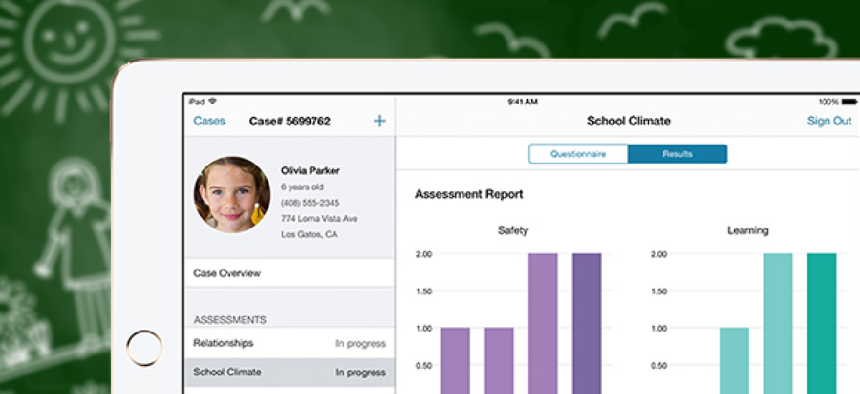Analytics powers app for social workers

The Case Advice app pulls data from a variety of back-office systems and makes it available to case workers while they’re in the field.
The marriage of IBM’s analytics technology and Apple’s popular mobile devices has produced a government-specific app called Case Advice, which is geared toward making social workers’ jobs easier.
Part of an eventual suite of case management apps, the tool puts information at case workers’ fingertips by combining data from multiple systems of record with real-time data collected in the field so case workers can make more informed decisions in sessions with people in need.
“Any app in this space, if it’s going to transform a government process, for example, it’s got to be powered by analytics,” said Ian Baker, partner and global government industry leader at IBM Global Business Services. “We’re saying, ‘How can we take the power of the data and the information in multiple back offices and bring that together?’”
The answer is to take data – photographs, audio, video and environmental information – residing in a variety of back-office systems and make it available to case workers while they’re in the field. That way, they can run algorithms and get immediate recommendations. The workers can accept those and submit them via an application programming interface (API) call into their back-office system.
The process works through technologies, such as IBM i2, intelligence analysis, law enforcement and fraud investigation solutions that already have a place in social services. Data from i2 is then fed via APIs to the Case Advice app.
Here’s how it would work: Case workers securely sign in to the app and get their cases for the day. When they select one, the app calls out to APIs, and analytics running in the background pulls information about the case. The result is what IBM calls a genogram, “a visualization of the different relationships between different participants in the case,” Baker said.
The visualization could show, for instance, that past participants included a parent, a guardian and a probation officer, but during a visit a worker encountered someone new, such as a boyfriend, who needs investigating. Because information on the new boyfriend could exist in multiple government databases – court or school records, for example – the analytics could instantly highlight issues and suggest questions for the worker to ask.
“The solution adjusts case priorities based on real-time analytics-driven insights and assesses risk based on predictive analysis,” according to an Apple statement.
The goal, Baker said, is not to give raw data to case workers, but to provide information that is contextually relevant to the case they’re working on.
Using the app, case workers can collect data using a forms-based screen, intelligent capture or voice recognition – IBM is also working on stylus writing – and take photographs with the device’s camera. “The idea is to take away any barriers to the user,” Baker said.
Case Advice is a native app written in Swift for iOS. It’s designed to run off-line, so if there’s no Wi-Fi or telecommunications connectivity, information will be held on the device until it reconnects. At that point, it will feed into the back-office system.
Because of the nature of the information involved, security is crucial and comes in two forms: authorization and authentication. To use the Apple device, two-factor authentication – both a fingerprint and a password – is required. Authorization to use the app is built around IBM’s MaaS360 software, a mobile device management suite that ensures individual apps can be removed and protects Case Advice from being accessed by other apps on the device.
IBM and Apple announced their partnership in July and released the first 10 IBM Mobile First for iOS apps for iPhones and iPads in early December.
IBM and Apple chose to focus on case management for social workers because there are about 700,000 social case workers in the United States who do their jobs most often in a face-to-face environment in order to help children, vulnerable adults and senior citizens, Baker said. But most case workers spend 30 percent to 40 percent of their time on administrative tasks, entering the data they collected on-site into back-office systems – and that’s a waste of time, he added.
“There’s a big productivity challenge there,” Baker said. “The real issue is about how do they get better outcomes? How can the case worker make the most informed decision possible?”
NEXT STORY: USAID looks to upgrade geospatial analytics





